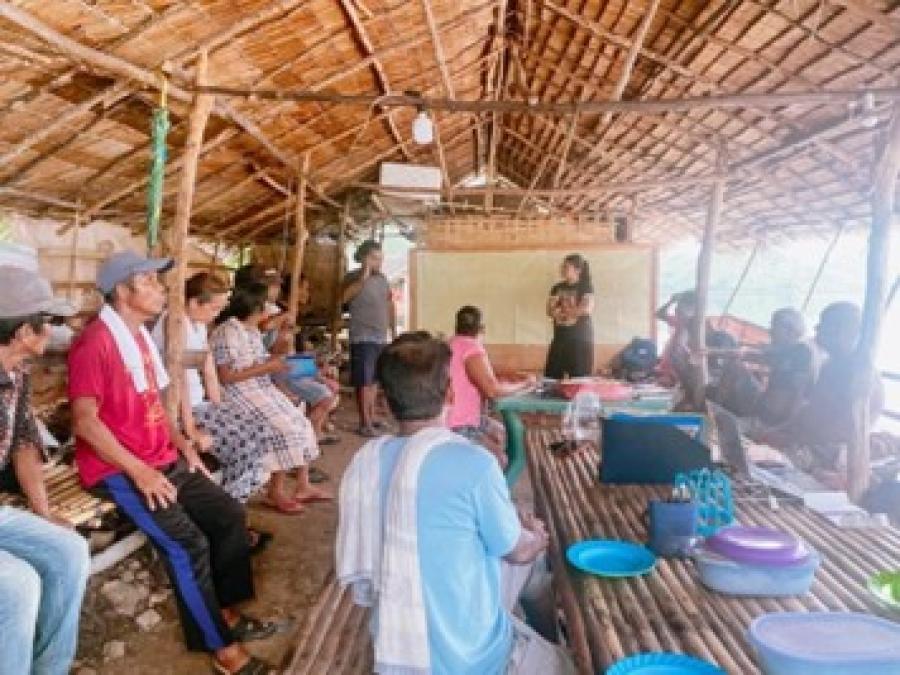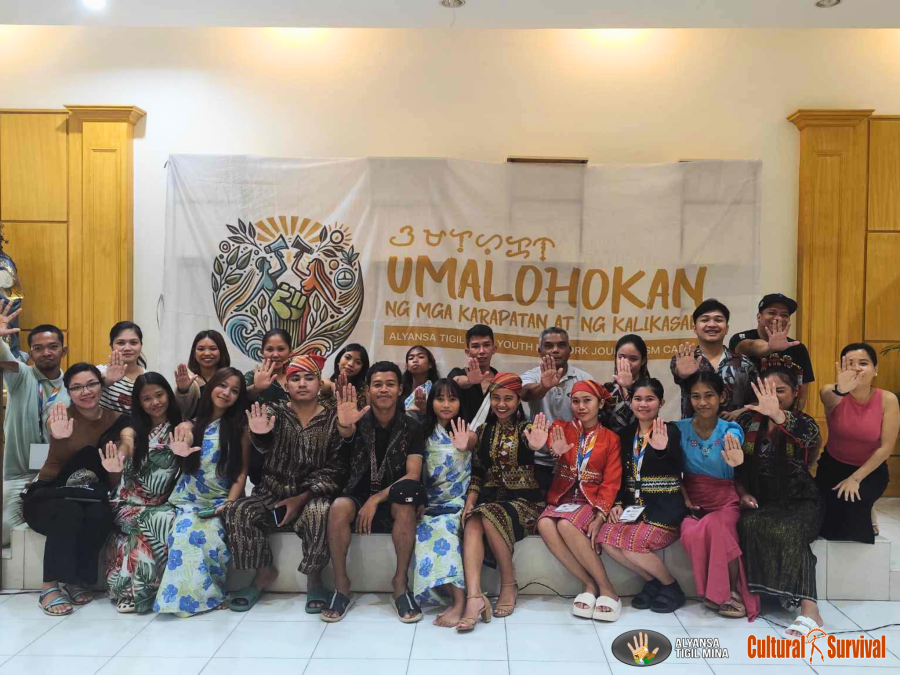This fisherman from Bicol Province in southern Luzon faces an uncertain future as his daily catch steadily drops below his subsistence needs. To match his former yields, he now has to venture farther out to sea. This has correspondingly increased his expenses and has reduced his time for supplemental farming. As he explained to the author over a meal of vegetables and fried bananas, "I can't afford to eat what I catch."
Marine fishing in the Philippines in more than an industry; it is a way of life. With 7,100 islands, the Philippines has the world's longest discontinuous coastline. Over a million Filipinos are engaged in marine fishing. Of these, an estimated 800,000 are small-scale fishermen using tradition, low-cost techniques, notably net fishing from small boats and the fish corral. The fish corral is a stationary pen that traps fish in coastal fishing grounds. Traditionally, these techniques have provided small-scale fishermen and their families with a means of subsistence. In the past two decades, however, their way of life has been threatened by the rapid commercialization of Philippine waters.
Contributing to this commercialization was the ratification in 1978 of the Law of Sea Treaty, developed by the United Nations to govern the international use of ocean resources. The treaty allows coastal nations to expand their ocean territory to 200 nautical miles from the shoreline or other specified baseline. Using the treaty's Exclusive Economic Zone provision, the Philippines extended its marine resources from 411,668,600 acres to cover a total of 522,863,600 acres. This was not without cost. With territorial expansion came increased responsibilities. As specified in the treaty, "rational development of expanded zones" required full utilization of resources. Where this was not possible, other nations were to be given access to the surpluses.
Even before territorial expansion, the Philippines had not been able to fully utilize its marine resources. To meet the added challenge posed by the Law of the Sea agreement, the Philippine government opened the doors to foreign investors. Foreign corporations were granted the right to extract resources and repatriate profits without taxation. With support from such agencies as the Asian Development Bank, the Philippine government constructed several large ports, storage areas and ice plants, significantly increasing the nation's production and export capacity.
An earlier law promoting foreign investment was the Philippine government opened the doors to foreign investors. Foreign corporations were granted the right to extract resources and repatriate profits without taxation. With support from such agencies as the Asian Development Bank, the Philippine government constructed several large ports, storage areas and ice plants, significantly increasing the nation's production and export capacity.
An earlier law promoting foreign investment was the Philippine-Japan Amity Treaty, passed in 1973. This granted reciprocal rights to the Philippines and Japan to exploit their collective marine resources. Philippine critics of the treaty had argued that Japan was better equipped to exploit Philippines waters than vice-versa and that Philippine marine resources were of greater value than the more polluted Japanese waters. The treaty had been rejected by the Philippine government for more than a decade but was passed in the second year of martial law under former President Marcos.
As a result of these government programs and policies, Japanese - as well as American, Canadian and Australian transnational corporations - have substantially increased their presence in Philippine waters. These corporations have introduced greater use of large-scale trawlers and purse-seiners - new methods that have brought more offshore resources under cultivation and have helped increase total annual Philippine marine fish production to over one million metric tons at an average value of US$400,000,000 per annum. For small-scale fishermen, however, this increased production has not improved their situation; in fact the opposite has occurred.
Intensified harvesting in offshore fishing grounds has correspondingly lowered the productivity of the traditional coastal fishing grounds on which small fishermen rely. Moreover, foreign investment in the fishing industry has created export-oriented trade patterns that have, in turn, created a dual economy. Small-scale fishing has become increasingly marginalized and now must compete with the large trawlers and purse-seiners for resources to meet local subsistence requirements.
In addition, coastal populations have swelled in recent years, due in part to general population growth and in part to more complex demographic trends. Reportedly, increased militarization and economic hardship in agricultural areas, particularly where monocrop farming dominates, have displaced farmers and farmworkers, pushing them to the coast. The scarcity of employment opportunities in other sectors of the economy as forced many to seek subsistence from fishing despite their documented willingness to move into other occupations.
The net impact has been increased stress on inland ecosystems and a steady decline in coastal fish stocks. Although the actual magnitude of this decline is difficult to measure one study by the Philippine Bureau of Fisheries has shown that various key coastal fishing grounds are approaching, or have exceeded, the point of maximal exploitation. In order to meet their former production levels, coastal fishermen now have to venture farther and farther out to sea. "It used to be that the fish came to us," one fisherman explained, referring to the fish corral method, "now we have to go after the fish."
"Going after the fish" entails motorized vessels and substantially higher costs than traditional methods. In addition to longer hours spent at sea, fishermen must absorb the costs of engines, fuel, machinery and repairs. To cover costs, they must increase their production. In some areas, fishermen unable to absorb these costs have turned to an alternative method - explosives. Harvesting fish with explosives has further devastated many fishing grounds, to the detriment of the fishermen themselves; but their rationale is clear. Of the techniques available, using explosive brings the greatest immediate return at the least short-term cost.
Other fishermen have been forced to become wage-laborers for transnational fishing corporations or to a growing class of non fishing boat owners. With increased capital investment and overhead costs, these owners have played an important role in financing the new, more capital-intensive fishing technologies. They are typically urban-based businessmen widely separated from their crews by income, education and culture.
Although the rules vary from one fishing company to another, the fishermen generally are paid according to a share system which divides the net earnings of a catch between the crew and owner. A common division is 50 percent to the owner and 50 percent to the crew. This covers only net earnings, however, with operating expenses being defined by the owner. Often, the owner of the boat is also the local buyer/distributor of fish and is able to buy the fish his crew catches at a price that he sets. Reports of exploitation are widespread.
For coastal Filipinos, the combined effect of all of these forces has been a steady reduction in their standard of living. While average income are difficult to measure, the choices these fishermen must make are clear. Independent coastal fishermen faced with diminished catches together with increased production costs much choose between eating the fish they catch and selling it to meet their expenses. For fishermen working as crewmembers on larger boats, their wages are simply too low to meet their basic needs. One estimate of a crewmember's average annual wage was less than a fourth of the poverty threshold as determined by the Philippine National Economic Development Authority. Perhaps most disturbing is the prevalence of malnutrition in coastal communities, despite the obvious availability of food. As one fisherman explained to the author during a meal of vegetables and fried bananas, "I can't afford to eat what I catch."
To ease the situation that Philippines government has launched several programs, but these have largely failed to reach small-scale coastal fishermen. One such program is the Biyayang Dagat, or Merciful Seas Program, initiated in 1977. The program was designed to provide low-interest loans to small-scale fishermen through private rural banks. However, most banks require collateral, thus leaving many fishermen unable to participate in the program, which they sometimes refer to as the Buwayang Dagat, or Crocodile Seas Program. The larger port development projects have been similarly limited. The Navotas Fisheries Port in Metro Manila, for instance, displaced many fishing communities. It support almost half of the nation's commercial fishing industry but is largely off limits to small-scale fishermen.
Many small-scale fishermen are hopeful that President Aquino's administration will respond more effectively to their needs by including them in the process of formulating national fishing policies. In preparation, groups of marine and freshwater fishermen have begun organizing at the local, regional and national levels. One such group, in a dramatization of the impact that commercialization has had on their lives, asked the central question: "Is the sea still ours?" Until this question is addressed and the rights of small-scale fishermen ensured, the unchecked commercialization of Philippines marine resources will continue to threaten their way of life.
Article copyright Cultural Survival, Inc.



